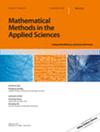Fixed-Time Bipartite Synchronization of Stochastic Multiplex Signed Networks Via Quantized Generalized Intermittent Control
Abstract
This study is dedicated to the fixed-time (FDT) bipartite synchronization of stochastic multiplex signed networks via quantized generalized intermittent control (QGIC). Firstly, a multiplex network including signed graphs and stochastic disturbances is introduced. Secondly, a new lemma of FDT stability is established by using reduction to absurdity and mathematical induction. Thirdly, based on the proposed FDT stability and the stochastic analysis techniques, several sufficient conditions on FDT bipartite synchronization are derived by designing a novel QGIC strategy. Significantly, the designed controller is a unified form of periodic and aperiodic cases and is only activated in the work interval. At last, two numerical simulations are offered to validate the superiority and effectiveness of the theoretical findings.

 求助内容:
求助内容: 应助结果提醒方式:
应助结果提醒方式:


